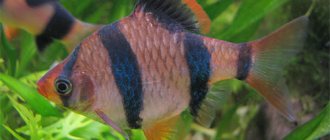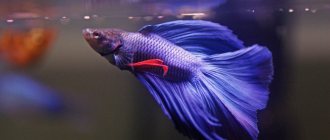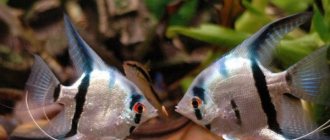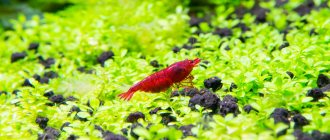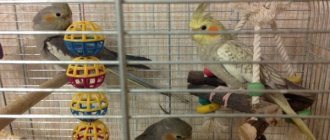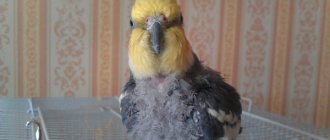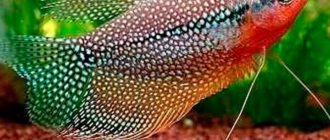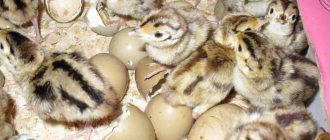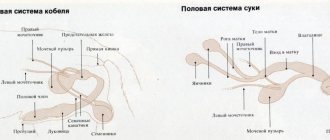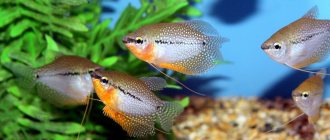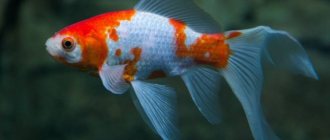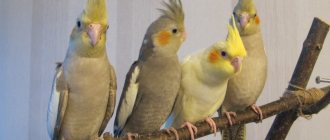The cockatiel or Australian cockatoo is one of the most enjoyable pet birds. These are smart, active parrots of medium size - up to about 30 cm with a tail, which makes it possible to keep them even in an apartment. It is easy to make friends with birds; they feel great in human company. Of course, any owner wants to know what gender his pet is, but determining the gender of a cockatiel parrot is not always easy, although there are ways.
Cockatiel color and gender
Determining the sex of a cockatiel is not the easiest task, even for breeders. The genital organs of birds are structured differently than those of mammals, so simply looking “under the tail”, as is done with puppies or kittens, will not give anything. The gender can be indicated by color, behavioral characteristics, even the character of the bird, but each of the signs does not always provide a 100% guarantee.
It is almost impossible to determine the sex of very young chicks. They are of a dull color, which in nature allowed the birds to remain invisible to predators, and their behavior is also quite quiet. You can find out the sex of a cockatiel parrot after five to seven months, when the plumage begins to change. However, another problem arises here: it is almost impossible to see a “wild” cockatiel outside of its homeland, Australia; the export of birds is prohibited by law. Parrots are bred in captivity, where they make much more trainable and enjoyable pets, but breeders have tampered with the birds' coloring. Therefore, it is important to take into account the features of the color scheme:
- The natural color of parrots is dark gray with bright yellow-red spots on the head and cheeks. Tuft yellow. Large flight feathers on the wings are white. This is the most common, natural color. Differences between the sexes in cockatiel parrots of this color are noticeable after the first moult: males have much brighter cheeks and crests, while females can remain almost completely gray. Additionally, the beak of boys begins to darken, but this feature indicates that the parrot is completely adult, over one and a half years old.
- Lutino color is an artificially bred light shade. Outwardly, such birds look very beautiful, more elegant than their gray counterparts. However, determining the sex of a lutino cockatiel is even more difficult: you have to take the bird by the wing and look at the pattern of the feathers. In males it is “ladder”, and in females it is “oval”. Without proper experience, the task is difficult to complete; here it is advisable to trust the breeder.
- Pearl lutino - differs in that females look more “interesting”. The fact is that after a year and the first juvenile moult, males become simply white, while girls retain yellowish spots, similar to a kind of golden glow. This is also an artificially bred color of birds; pearl lutino is not found in nature.
- Variegated colors are, as a rule, hybrids of lutin and natural, sometimes with an admixture of pearl. The birds are very beautiful, but here the coloring will not help to distinguish a boy's cockatiel from a girl's parrot. Outwardly they look exactly the same.
Before the onset of puberty, all chicks look like “girls”. Taking one is always a risk if the future owner wants to get a male or only a female. On the other hand, the younger the bird, the easier and faster it gets used to its new home.
From the point of view of parrot breeders, the best age for a small parrot to move to a new home is after the first molt, when sexual behavior characteristics already appear, the bird’s character is manifested, but it is still quite plastic and flexible. If the bird is under six months old, then you will have to spend a lot of time with it, almost like with a real child, and individuals older than one and a half years are much less tamed than young ones. Color is important because it indicates not only the gender, but also the age of the parrot.
Determining gender by appearance
The size of a male cockatiel is not very different from that of a female cockatiel – you should pay attention to the plumage. The first is the tail, which in males has an elongated, sharp shape. It tapers towards the end, which makes the entire figure of the parrot look more graceful.
The female cockatiel has a fluffy tail that is somewhat disheveled. This generally gives the bird a more rounded, portly appearance. By the way, the same trend is observed in relation to the crest: in males it is narrow, there are only 2 or 3 feathers, they may have a greenish tint. In females their number reaches 6 pieces.
Females have a parting of feathers on the chest that males do not have - often it can be a pale orange color. Sitting on a perch, the male cockatiel spreads its legs wider than the female.
Behavior and sex determination
Baby cockatiels behave the same way, while they are naked and fledgling, they communicate only with their mother, and later they try to appear quiet and inconspicuous. This natural instinct helps in natural conditions to remain unnoticed and not get caught by predators. The chicks will be much noisier after they learn to fly, but until the sexual molt they still remain children. Juvenile molt signifies maturation. The sexual behavior of a male cockatiel parrot is distinguished by the following features:
- They fold their wings into a “heart” shape, while girls simply fold them away, without a distinct “pattern”.
- More active, they can sometimes be pugnacious, especially if there are several males in the brood.
- Males have a better ability for onomatopoeia and singing. Even very young cockatiel boys try not only to squeak, but also to imitate sounds.
- Males knock with their beaks, thereby attracting the attention of girls.
It is difficult for an inexperienced person to understand the behavior of a parrot. In addition, even birds have different characters - there are lively, singing females and quiet, modest boys. It is impossible to adequately assess the “manners” of a parrot if it is in uncomfortable conditions, if it is in pain, cold or scared. Therefore, purchasing parrots at the “bird market” is not recommended, even from the point of view of the differences between a male cockatiel and a female.
It is best to ask the breeder for help in determining the gender, but you can also observe on your own. It is advisable to come to the owner of the parrots at home, and not to get too close to the young animals: strangers can cause anxiety. Grown-up young chicks actively compete with each other: whoever sings more beautifully will produce a more complex trill; they often demonstrate their “talents” on toys. Females sit more quietly, may remain silent or occasionally make characteristic “quick” sounds. A few more tips for determining the sex of a parrot:
- males are larger - however, this is difficult to understand from young birds, they continue to grow until one and a half to two years;
- girls, when they are not flying, waddle, and boys move faster;
- males have larger crest feathers, the crest itself begins from the bridge of the nose, while in females it starts from the head;
- males are friendlier, more willing to communicate and reach out to others;
- females play less and chew less.
Most owners of only pets prefer to take boys: they learn onomatopoeia more easily and are more willing to make contact with people. On the other hand, females are calmer and less likely to spoil things, and can be kept outside the cage.
External differences of a parrot
It is difficult to determine gender before 9 months of age without DNA. Only after the juvenile - first molt - do cockatiels of different sexes begin to visually differ. Birds acquire characteristics characteristic of each individual. These are different colors, plumage, formed skeleton, character and behavior.
Determining sex by the crest of a parrot
The crest of an adult male is yellow, and the tips are brownish-gray. The feathers on the head fit tightly together, straightened, as if polished. The tip of each is slightly bent forward.
The difference between a boy and a girl by crest
In cockatiel girls, the width of the crest is equal to the size of the head; it is much more voluminous at the base. The feather is shorter than the boy's and has a slightly greenish tint. The result is a voluminous hairstyle.
By body structure
The boy's back is straight and taut, the tips of his wings are sharp, dark in color with white streaks. The male has a narrow tail at the base and places his paws close to each other.
Read also
How do semi-parrots differ from budgerigars?
The female looks broad, hunchbacked and slightly disheveled. From the outside it can be mistaken for a ball. Female cockatiels have a parting down the center of their bellies. When stationary, the paws are placed wider than boys - this is explained by the presence of a wide pelvis.
Plumage color
Nymphs come in different colors. The most popular is a gray body and a yellow head with orange cheeks.
Determining the sex of a parrot by feather color
Natural gray
In this group, gender is easiest to recognize. Distinctive features of males:
- The crest has three colors: gray, yellow, olive.
- There are two round orange spots on the head.
- The body is dark gray.
Females are lighter; the cowlick and stripes on the tail have light yellow inclusions. The circles on the cheeks are invisible at a young age, but then become pale orange. Igor Ignatenkov
White-faced cheekless
A distinctive feature of this category is the absence of spots on the head. In boys it has pure white plumage, in girls it is mixed with a brown or gray tint. Also, male cockatiels have a rather high crest on their heads and a long, pointed tail.
Sex determination of the subspecies White-faced cheekless cockatiel
Lyutino
The gender of this subspecies is quite difficult to determine due to the bright yellow plumage and white spots on the wings. Only if you look closely, you will notice stripes on the tail of females of a darker shade.
Albino
The birds are completely white with red eyes. The head and crest are slightly yellowish. Boys' feather color is close to silver.
Girls, compared to males, are duller with cream-colored plumage. Spots on the wings and tail with “marble” inclusions.
Pearl barley
Sometimes this subspecies is called pearl because of its amazing iridescent dark yellowish hue and cinnamon color. Males are plain, but females are pearl gray with a peculiar pattern on their feathers.
Differences in sex in the stock of the Pearl Corella
White
Unlike albino, these nymphs are not just white, but have a noticeable yellow tint. Both boys and girls have black eyes. In males, the tail feathers of the undertail are lighter, and the two feathers in the center are completely white. In females, the plumage in these parts of the body has a distinct marbled pattern, the tail is completely yellow.
Colors without gender differences
It is completely impossible to determine the sex of birds based on the colors of some subspecies of cockatiels. This:
- harlequin;
- black-winged;
- cheeks;
- black.
In this case, breeders need to observe the little nymphs’ temper, actions and demeanor.
Characteristic behavior of male and female
Males sing more softly. They have more whistling in their chirps. Females prefer creaking sounds.
I also suggest that cockatiel buyers conduct an experiment with a mirror.
You need to put it in front of the bird and observe the reaction. Boys are more prone to narcissism than girls. They will walk from side to side, admiring themselves, chirping invitingly. Female individuals show almost no interest in their reflection.
Read also
How many years do budgerigars live in a cage at home?
Males have a special ritual for attracting females. Even if the cockatiel lives alone, he can act as follows:
- Click with its beak on toys, perches, and the cage itself.
- Make polysyllabic sounds of melodies, and not just pronounce “kwi-kwi”.
- Fold the wings into a heart shape and spread them wide.
- Jump up and have noisy fun.
Females hardly show themselves at all. They are inactive, do not rattle their toys and do not destroy everything around them with their beaks. Female cockatiels emit a quiet whistle - singing and copying other sounds is difficult for them. They are sure to gnaw on something, sorting through everything that the owner has poured into the feeder.
DNA analysis
Today this is the simplest and most effective method for determining the sex of birds of the parrot family. But researchers have proven that if until recently this method was considered 100% probable, now this figure has dropped to 65%.
In cases where the breeder has determined the sex of the cockatiel by color and behavior, I do not recommend performing a DNA test, if only because of the high cost of the study. For those who decide to conduct such an analysis, it is advisable to know that to carry it out you will need: a claw, a feather from the chest, and, if possible, blood. Everything is placed in separate containers and sent to a special laboratory.
How to distinguish the sex of a cockatiel parrot by color
The male has brighter colors. Its head with a crest is yellow, the flight feathers and tail feathers are almost black, the rest of the plumage is dark gray with an olive tint. Orange-red spots are visible on the cheeks. The outline of the beak is similar to that of a cockatoo, but smaller.
Females have a dirty gray color, with a brownish tint at the bottom of the body. The head, crest and cheeks are paler in color than those of the male. The undersides of the wing tips are spotted with pale yellow, and the outer edges of the tail feathers have visible yellow stripes underneath. This is not typical for adult males.
Nowadays, quite a few different colors have been bred, so determining the sex of the cockatiel has become very complicated. But these birds are very easy to breed. There is a whole article about breeding cockatiels at home.
